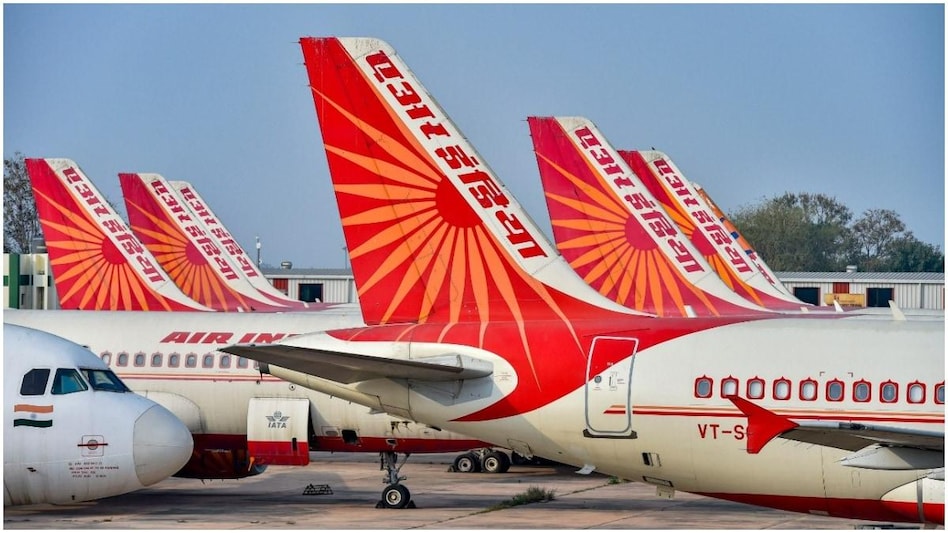 Speculation around Air India order shows country to drive global aircraft sales
Speculation around Air India order shows country to drive global aircraft sales Speculation around Air India order shows country to drive global aircraft sales
Speculation around Air India order shows country to drive global aircraft salesA spate of source-based reports claiming that Air India may be placing orders for up to 300 aircraft once again gives credence to forecasts that, together with China and Southeast Asia, India would also be driving sales growth at the world’s leading civil aircraft makers over the next several years.
Industry experts have, meanwhile, said the national flag carrier’s decision to consider placing one of the largest orders in the history of commercial aviation is straight out of the industry playbook.
“The aircraft order will provide a significant opportunity for Air India to revamp its fleet and negotiate much better rates with the manufacturers. The delivery schedule of these new aircraft will be challenging and that would mean that while the order is big, it will be delivered over a long period. Maybe seven years from the time of order,” partner at aviation advisory Caladrius Aero, Rohit Tomar told Business Today.
Moreover, such large orders facilitate volume discounts for airlines and help to lock in slots at production lines while also ensuring the availability of the right aircraft for deployment. The proposed order by Air India would, thus, seek to address the twin challenges of both replacement and growth capacities.
“Back of the envelope the combined narrowbody fleet of Air India, AirAsia India, Air India Express and Vistara is about 177 odd aircraft and widebody fleet is 45 aircraft. So, a 300 aircraft order would have an estimated split of 50 widebodies and 250 narrowbodies,” pointed out managing partner at aviation advisory AT-TV, Satyendra Pandey.
“However, their overall strategy will only be clear after details emerge. Orders require extensive planning and an astute reading of the market including transition risks,” Pandey added.
Air India has been in talks with the European aircraft maker Airbus Industrie and the US aerospace giant Boeing for the aircraft purchase since its return to the Tata Group fold in January this year. However, the fiasco resulting from the former Turkish Airlines chairperson Ilker Ayci declining the CEO role and the consequent delay in the appointment of a new chief executive had led the airline to postpone a final decision in this regard.
The appointment of the former Singapore Airlines low-cost subsidiary Scoot CEO, Campbell Wilson – subject to requisite regulatory approvals – has put the airline’s fleet acquisition plans back on track, industry insiders say.
A mixed fleet
Experts point out that a fleet expansion of the size being planned by Air India would be a mix of A320neo, A321neos and A321XLR if the airline chooses Airbus or B737 MAX 8, 9 and 10 if it finalises Boeing.
“The A321neos, for instance, are far more fuel-efficient and have a higher capacity, which will help to bring the direct operating costs for Air India in close range of its competitors,” explained Caladrius Aero’s Tomar.
In India, the price of aviation turbine fuel (ATF) on domestic routes can vary from 25 per cent of total operational costs for a single-engine aircraft to up to 45 per cent for a large passenger jet.
The airline is also reported to be scouting for a suitable aircraft to operate ultra-long-haul flights from India.
“Expectation of a huge order for narrowbody jets also implies increased focus on the domestic market, apart from international markets, for which, Air India is looking to buy wide-body jets. Key monitorable remains the delivery timelines, given both Boeing and Airbus have relatively healthy order backlog,” said aviation analyst at Ambit Capital, Karan Khanna.
“Also, existing domestic airlines including IndiGo, SpiceJet and GoFirst – apart from new entrants including Akasa and Jet 2.0 – either have or are in talks to place a healthy order pipeline across both these providers,” Khanna added.\
The country is estimated to require 2,210 new aircraft over the next 20 years, according to Airbus’ India Market Forecast released in March. That may comprise 1,770 new small and 440 medium and large aircraft. On international routes, India has only about one-tenth of the widebody fleet found in equivalent markets, depriving homegrown carriers of a larger share of the profitable long-haul routes currently dominated by foreign airlines.
However, in the high cash burn aviation industry, carriers need to also watch out for absorption risks while planning fleet expansion.
“Some airlines have placed voluminous orders only to find an asset and mission mismatch or in some cases unable to line up financing at favourable terms. With this order, for India, the ratio of aircraft on order to aircraft in service will be approximately 1.7 and thus infrastructure will have to be planned accordingly,” said AT-TV’s Pandey.
Domestic and international passenger traffic at airports touched 93 per cent of pre-Covid levels in May 2022. Currently, the world’s third-largest domestic aviation market, India is expected to overtake the UK to become the third-largest globally by next year, International Air Transport Association (IATA) said in an update to its 20-year air passenger forecast.
Also Read: Tata Steel stock falls 60% from April high: Should you buy the dip?
Also Read: 'Drishyam 2': Ajay Devgn, Tabu, Shriya Saran starrer to release on November 18